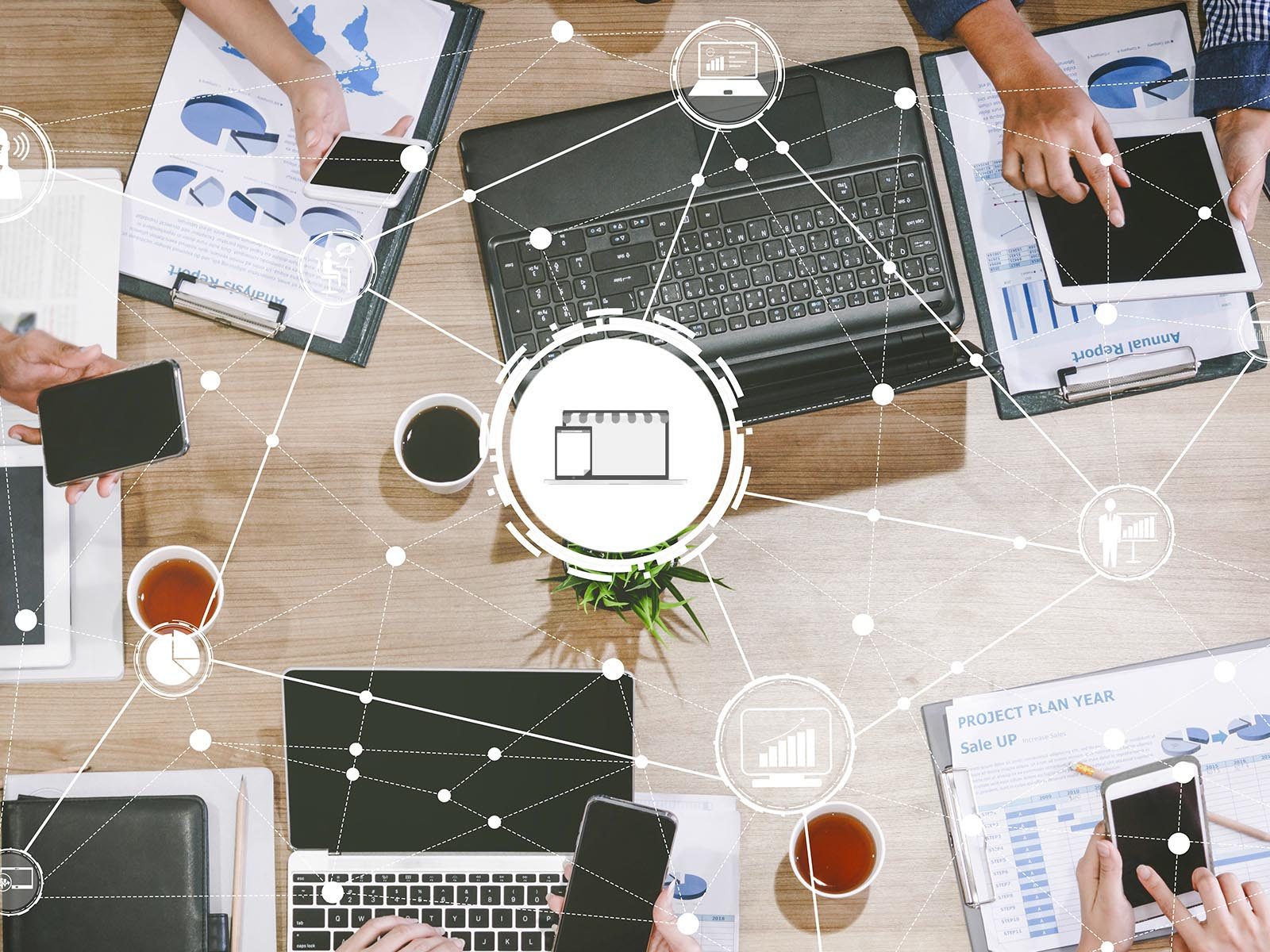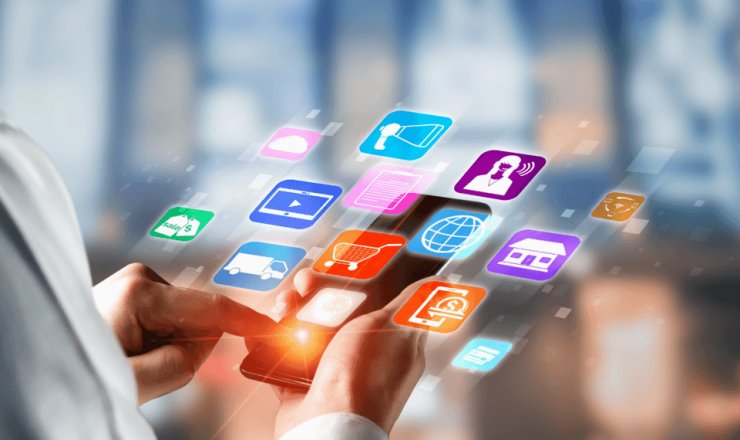

Over the last 5 years, the number of channels that B2B buyers use has doubled from 5 in 2016 to 10 in 2021. B2B brands know that buyers are using more touch points than ever before they make a purchase.
In response, B2B brands are hustling to set up multichannel and omnichannel experiences to meet their buyers where they are shopping.
At first glance, it may seem that multichannel and omnichannel refer to the same thing, but the reality is that multichannel and omnichannel are significantly different.
In short:
- Omnichannel is a far more effective solution for your B2B business as it provides a unified, personalized customer experience.
- Multichannel gives your buyers multiple touchpoints, but lacks the personalization of omnichannel.
How do you shift from multichannel to omnichannel? It’s not that complicated! To help you make the switch, we’ve put together an easy guide to help you switch marketing strategies from multichannel to omnichannel.
Let’s dive in together to discover how to shift from a multichannel to an omnichannel marketing strategy in six easy steps.
How to shift to omnichannel marketing from multichannel marketing
Switching from multichannel to omnichannel is a smart investment that provides buyers a unified customer journey. It makes sense why businesses want to make the switch.
Let’s take a look at the steps businesses need to follow to make the switch.
1. Understand your customer’s journey
The key difference between omnichannel and multichannel is that omnichannel is customer-centric. So, when building out your omnichannel marketing program, you need to start with the customer’s journey in mind.
Where does your customer typically start their journey? Do they do some research on their desktop? Are they shopping on mobile? How responsive are they to email? Discover how your customers prefer to be reached, and then build an omnichannel marketing plan around this journey.
2. Collect your marketing data in one place
The next step in omnichannel marketing is to sync all of your marketing data in one place. You’ll need this data to deliver effective and personalized campaigns to your audience. That means taking your first-party data from your web store, social media channels, email marketing, and SMS, and hosting them all in one marketing platform, such as a CRM.
3. Segment your audience and determine their personalized journeys
Now that you have all of your marketing data, it’s time to segment your audiences based on their journeys. Once you’ve created functional segments around shopping behaviors, you can determine how each of these segments will move through the sales process. From there, you can tailor your messaging and omnichannel approach.
4. Automate marketing processes to provide a seamless customer journey
You have your segments, you know their journeys, you even know where you want to engage with your buyers; now it’s time to automate certain marketing processes (push notifications, email), so that your customers are automatically reached based on their behavior across your sales ecosystem.
This is the crux of an omnichannel marketing strategy: a personalized shopping experience that is automatically triggered based on individual buying behaviors. Transitioning from a multichannel to an omnichannel marketing strategy must take this to heart.
5. Use a unified customer support system
Marketing is only one part of the equation – the entire customer journey must be personalized. You will need to streamline your customer service operation by bringing all of your customer communication into one platform.
This includes:
- Customer tickets
- Social media messages and comments
- Text messages
- Chat logs
Once all of your customer interactions are in one place, then you can easily see the conversation history of each customer, and you are better able to serve them.
6. Use an integrated e-commerce platform
Even brands that have all of their marketing data in one place still face a serious challenge: connecting their web store to their back end. Without an integrated system, orders and fulfillment operations are not automatically updated between the two systems; these updates must be done manually.
This is a huge impediment to growth, and it prevents many brands from making the switch from multichannel to an omnichannel marketing strategy.
To rectify this, brands need to use an integrated e-commerce platform – one that directly pulls data from a brand’s single source of truth: their ERP.
How could an integrated e-commerce platform improve the buyer journey?
Omnichannel integrated e-commerce in action
Let’s take a B2B customer, Tanya. Tanya just bought two hundred staplers from your company. A few days later, Tanya realizes she’s accidentally keyed in her old address. Yikes!
She quickly logs in and changes her address on the website and asks that the shipment be rerouted. Since your online store is synced to your ERP, this change on your web store will be automatically reflected in the ERP. If the shipment hasn’t gone out yet, then it will be sent to the new address on file. Luckily for Tanya (and for you), the shipment was able to be rerouted in time!
What’s the difference between multichannel and omnichannel?
A multichannel marketing strategy is when a business uses several channels to market its product, without the channels talking to each other. When a B2B buyer thumbs through an e-commerce store on their phone, that data isn’t remembered when the buyer accesses that store later via desktop – or when they call a customer representative.
The brand expects each customer to behave within the confines of a particular channel, and it doesn’t take into account any interaction they’ve had with the same brand using a different channel.
The visibility into the customer journey is limited, and the company focuses on each channel separately instead of looking at the holistic journey the customer is taking.
What are the end results? Siloed data and customers who have to “start over” every time they interact with a brand on a new channel.
Omnichannel is different. The difference between omnichannel marketing and multichannel marketing is that, with omnichannel marketing, all the data is synced between channels. They work together to help move a customer through the marketing funnel.
Example: Multichannel vs omnichannel
Our B2B e-buyer wants to buy five hundred kitchen mixers. They go to the B2B kitchen e-commerce site with their iPhone, then add those mixers to the cart.
But then, they get distracted by a slack message from their boss. Hey, we’re ordering Thai food. Is curry ok?
Frantically distracted by the urgent curry decision (yes, but only if it’s red curry), the buyer neglects to complete the purchase, leaving those mixers in the cart.
Not to worry! With omnichannel, the B2B business can send personalized texts and emails to nudge the customer to complete the purchase. Clicking the link on a different device (say, a desktop) will show the cart with the saved items, eliminating the need to go back and add the mixers again.
This is why we say that omnichannel is a more customer-centric marketing solution.

The new normal for B2B buying has arrived.
Is your business ready?
Why not use a multichannel marketing strategy?
When deciding between a multichannel marketing strategy and an omnichannel marketing strategy, it might not be obvious why you would prefer omnichannel at the outset.
After all, multichannel is less strenuous to set up, requires less personalization, and is a smaller investment.
The problem with the multichannel approach is that it provides a suboptimal user experience. Customers get marketing messages that aren’t personalized, and there’s no consistency in the messaging between the different channels.
Multichannel leads to fewer conversions
When messaging isn’t personalized, fewer customers convert. Brands often treat these channels as silos instead of an integrated network of customer touchpoints. A disorganized multichannel strategy results in lower conversions, more dissatisfied customers, and wasted resources for the marketing team.
No one wants that. B2B businesses want to see returns on investment, and B2B buyers want a happy purchase experience.
Omnichannel leads to higher conversions
Omnichannel e-commerce makes both of these outcomes possible through its novel, integrated approach to marketing. B2B businesses should use an omnichannel approach where all the channels are synced together, and customers only get targeted based on their user behavior and specific data points.
Get higher retention rates with omnichannel marketing
Omnichannel marketing improves retention, increases customer satisfaction, boosts repeat purchases, and boosts your bottom line. Switching from multichannel to an omnichannel marketing strategy, therefore, is a smart investment that pays strong dividends. The challenge for brands that are trying to switch from a multichannel to an omnichannel approach is that such a shift is resource heavy. You need to invest in marketing automation, ERP integration, and data centralization to make this shift.
Sana Commerce provides an integrated e-commerce solution that makes your web store and your ERP work as one. By leveraging the power of your ERP, you can more effectively create a personalized customer journey, giving your B2B buyers that true omnichannel experience they want.
Ready to see how Sana Commerce can help your B2B business shift from multichannel to omnichannel?




